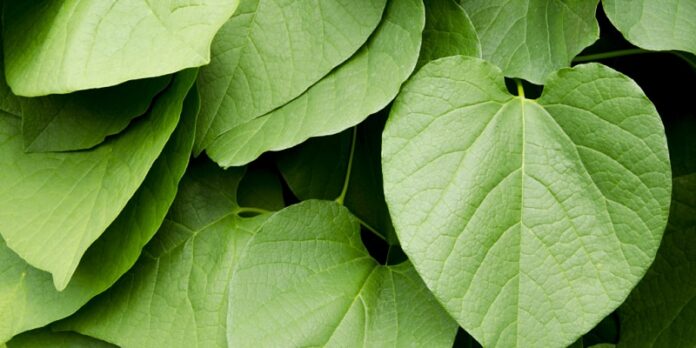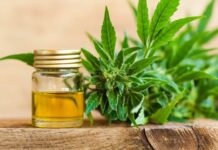Although the differences between kava and kratom are vivid, these two plants share some qualities that can make them look almost identical at first glance. If you’ve ever been to a kava bar or shopped for kava online, you must’ve noticed that kava and kratom are increasingly being sold next to each other.
That being said, it’s important that you know the differences between these two plants so that no mistakes are made upon the purchase.
While the appearances and potential health benefits of kava and kratom may lead you to think you can use these two terms as the mood hits, the fact is that they only start with the same letter and they both stimulate your brain, producing euphoria and sedative effects.
In this post, we would like to shed light on the major differences between kava and kratom, including their origins, chemical structure, benefits and side effects, and the way these two are prepared.
Let’s start with the origins, then. Ready for a history lesson?
Geographical Origins of Kava And Kratom
When it comes to geographical differences between kava and kratom, it’s the “East vs West” thing.
Kava is a native plant to countries of Western Pacific, such as Fiji, Hawaii, Micronesia, Papua, New Guinea, and Vanuatu. The plant derives from the pepper family, with a scientific name Piper Methysicum.
Kava is used among island communities on a daily basis. People consume kava extracts in their day-to-day social activities, but the plant is also an important part of any religious ceremony there.
Kava is typically consumed in the form of a beverage and local people drink it in Kava Bars (also known as Nakamals) instead of alcohol.
Kratom, on the other hand, belongs to the coffee family (its botanical name is Mitragyna). The plant has its origins in countries of Southeastern Asia, namely Indonesia, Borneo, Thailand, and Malaysia.
Surprisingly, although kratom has a long and beautiful tradition on this continent, it has become banned in the aforementioned countries over time.
Nevertheless, before the prohibition on kratom, locals have been chewing the plant’s leaves in its raw form, mainly by workers to relieve pain, enhance mood and burst their energy levels.
Now that you’re familiar with the geographical origins of kava and kratom, it’s high time we answered one essential question: what makes these plants so easy to confuse?
Similarities Between the Plants
Like we said, kava and kratom share some similarities that may make these two easy to confuse.
Let us take a look at these features. Shall we?
Appearance
If you see kava or kratom for the first time – be it in ready-to-go products or in their raw form – it may be difficult to tell the difference. When you encounter both plants in their natural habitat, you will notice a striking similarity between their leaves.
Ready-to-go products, in turn, are commonly sold next to each other, so novice herbal enthusiasts may find it hard to distinguish between kava and kratom by simply judging them by the appearance.
Preparation
Kratom and kava can be mixed with water, or if you want to mask their characteristic taste, you can add it to another drink or brew some tea. You can also find both in a pill form.
In order to prepare kava for consumption, cultivators use kava roots and grind them into a fine powder. Then, they combine it with water and strain the mixture into a glass or mug, depending on preferences.
When it comes to preparing kratom, the process involves using leaves instead of roots, which is actually the only difference between the plants in this aspect.
Effects
There is a well-documented record of the effects of drinking Kava. Although people usually drink it to get rid of pain, stress, and anxiety, the plant can also reduce social inhibitions and enhance one’s mood, often causing euphoria and happiness.
There are three categories of kava: heady, heavy, and balanced. The heady variety is perfect for daytime use; heavy varieties are better suited for relaxation later in the evening; balanced kava, in turn, is a good mix of both and can be used regardless of the time.
As for the kratom plant, science is very scant on its effects, but what we already know is that it has analgesic (pain-killing) properties, reduces anxiety, calms the body, and boosts social interactions for a short period of time – just like alcohol. That’s why some people choose kratom over booze during meetups.
To cut the long story short, kratom and kava can:
- Treat pain
- Reduce anxiety
- Relieve stress
- Enhance social interactions
- Bring down the feeling of relaxation
- Make you feel drowsy or sleepy in certain doses
So as you can see, both plants can be used either recreationally or to treat certain health conditions.
But do they affect the body and brain in the same way?
No, they don’t; and this is where the differences emerge.
Significant Differences Between Kava And Kratom
There are three essential differences between Kratom and Kava, two of which refer directly to the effects of both plants.
Chemical Composition
When speaking of differences between kava and kratom, we must take a closer look at how they’re built.
Kratom consists of over 40 chemical compounds known as alkaloids. These substances are the agonists of opiates receptors; in other words, they act in the same way as morphine, save for the potency of both – some of the alkaloids can be up to 10 times stronger than morphine.
Now, since alkaloids act on the same receptors as morphine, you may think that both substances cause similar dependence and withdrawal symptoms.
And you couldn’t be more right about it. We’ll get to it later on in the article, though.
As for the pharmacology of kava, it’s worlds apart from the chemical make-up of kratom.
While kratom has a poor record of scientific studies, the information on the chemistry of Kava and its effects are well explained by researchers.
Kava consists of kavalactones. These constituents engage with the limbic system, which is the area of our brain responsible for controlling emotions and energy levels. Because kavalactones tap to GABA receptors in the brain, they utilize norepinephrine and serotonin which, simply put, makes you happier.
That being said, all benefits associated with drinking kava come from kavalactones. Like kratom, kava can make you sedated, but in terms of mental clarity and general safety, kava has the upper hand in this clash.
This brings us to the second-most important difference between the plants.
Pharmacological Effects: Benefits And Risks
If we were to describe kava in one short sentence, we would say that this is a non-stimulating kratom. Kava has a wide range of medical uses.
The benefits of kava include:
- Reduced anxiety
- Pain relief
- Better sleep
- Improved mood
- Reduction of the muscle stress after a workout.
People all over the world enjoy kava for its recreational benefits. The clear-headed vibe and lack of social anxiety make kava drinks perfect for a laid-back night out. The interaction between kavalactones and the GABA system in the brain results in quicker recovery and improved rest, so don’t worry – you’re not going to experience a herbal hangover the day after.
Most importantly, the plant is not addictive because it doesn’t directly affect the opioid receptors.
As for the potential side effects, kava may be:
- Too sedating for some users, especially for inexperienced ones.
- Dangerous for the liver when consumed in large amounts,
but this is unlikely to happen since you would have to drink lots – and by lots we mean quite plenty – of kava to trigger such a condition.
That being said, you may consider kava fairly safe to use.
As much as we would like to say the same about kratom, this is not an option.
Kratom does help with:
- Pain
- Anxiety
- Stress
- Lowered libido
- Lack of concentration
However, even medium doses of kratom place too much burden on the body and mind.
Alkaloids occurring in the kratom can cause:
- High tolerance developed over time
- Strong dependence
- Unpleasant withdrawal symptoms
- Loss of appetite
- Nausea
- Hostile attitude
- Insomnia
A kratom-dependent person will experience almost identical side effects as a heavy opiate user.
Of course, the plant does help with pain, anxiety, stress, lowered libido, and lack of concentration, but even medium doses of kratom place too much burden on the body and cause strong addiction.
In fact, the lack of proper studies and the strong potential for abuse have motivated several governments to ban kratom from the list of legal substances.
Speaking of which…
Legal Status
Kava is gaining worldwide acceptance as a natural and safe remedy for many civilizational health conditions. It has been available in the US for over 20 years and it has finally made its name in the whole country. Kava drinks are becoming popular with everyone, from A-list celebrities to patients and recreational users.
As a result of studies suggesting that there was a link between the use of kava and liver problems, the plant was temporarily banned in Switzerland and Germany. Nonetheless, once it became clear that the aforementioned liver problems were related to other factors, the ban was abolished in 2015.
At the same time, kratom is in a less favorable situation. There is a serious legal battle around its active constituents that can result in the nationwide ban on kratom, mainly due to its strong potential for abuse.
Even in the countries of its origins, such as Thailand, kratom remains illegal since 1943. Although the plant grows there in abundance and is widely used by local people, you may face serious legal repercussions for simple possession; it’s quite scary, isn’t it?
Kratom advocates believe that the original ban was a result of the decrease in government tax revenues from opium sales, and there are votes that the substance should, again, become decriminalized.
However, it looks like the legal status of kratom won’t improve anytime soon. There is the connection between kratom and crime in the country, with 13,000 people being imprisoned for kratom-related crimes.
Kava vs. Kratom: Verdict
Although kratom provides users with positive short-term effects, the number of downsides outweighs them hands down.
Kava, on the contrary, is a non-addictive plant, with a long and beautiful history of ceremonial traditions of the natives living on the islands of Western Pacific where it has been cultivated for ages.
Pros:
- Potent mood enhancer
- Relieves pain
- Helps you overcome stress
- Reduces anxiety
- Doesn’t create dependence (unlike kratom)
Cons:
- Can make you drowsy if you’re new to kava
- Doesn’t go well with psychopharmacological drugs (just FYI if you take any)
Most importantly, kava is gaining acknowledgment and popularity in the U.S. as a natural and safe substance to unwind after a busy day.
Can’t wait to enjoy your kava? Head to your local kava store or shop for kava products online.
We cannot help but wish you a fruitful hunt!






This is clearly an attack on the non habit forming kratom. I have been using it multiple times a day for over a year now with no negative repercussions, including withdrawals in either myself or those around me who also take kratom. Funny how these smear pieces never post links or reference these “studies”. hmm…
Kava is crap compared to kratom. Kava just sedates you whereas Kratom rocks the house.